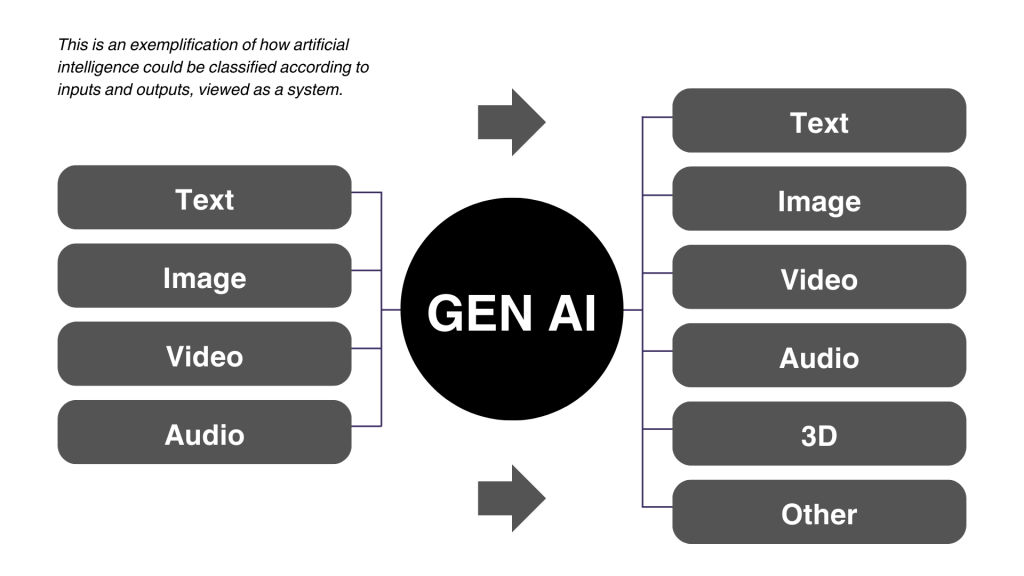Have you ever wondered how text, images or even music can be created from a simple instruction?
That’s what Generative Artificial Intelligence does, a technology that combines the creativity and simulation capabilities of human intelligence.
In this article, you will explore what exactly Generative AI is, how it is classified according to its inputs and outputs, and its various applications. You will also discover the most popular tools on the market, which will help you unlock the full potential of this revolutionary technology. Here we go!
What is Generative Artificial Intelligence?
I would like to describe it as a fancy term for calling this kind of technology, which is composed of two parts, Generative and Artificial Intelligence. The first part refers to the capacity of creating new content such as text, image, audio etc., while the second one is the technology that simulates human intelligence.
According to NVIDIA, an AI leader company, Gen AI empowers users to rapidly create new content from diverse inputs. These models can process and generate text, images, audio, animations, 3D objects, and other data formats.
Another definition from Google´s Engineer Roger Martinez “GenAI is a type of artificial intelligence that creates new content based on what it has learned from existing content.”
What are the Main Types of Generative AI?
In this case the classification is based on the types of inputs and outputs handled by this model. Inputs can include text, images, video and audio, while outputs can range from text and images to video, audio, 3D models and more.
According to the possible inputs, Gen AI could be classified as follows:

This is a non-exhaustive list of Gen AI possibilities, however the market trend shows that Gen AI tools are becoming more complete integrating multiple types of content generation, an example is Gemini which is becoming more and more integrated, offering even the management of smartphone applications.
At the end of the article, some of the main tools are shown to exemplify this classification.
In which cases I could use Generative AI?
Currently the most popular applications of Gen AI are:
Marketing: it can be used for the creation of personalized content, advertising campaigns and publications on social networks.
Programming: automating code generation, debugging, and even suggesting code improvements.
Data Analysis: producing insights, visualizations, and predictive models.
Sales: super useful for writing customized sales pitches, product descriptions and follow-up e-mails
Support: for handling customer queries, generating responses, and improving chatbots.
Music: composing original music, generating sound effects, and assisting in production.
Design: creating logos, visuals, mockups, and enhancement of creative projects(I used Midjourney for the main image of this article).
Education: developing interactive lessons, personalized study guides, and educational content.
And more. Simply let your imagination run wild.
The Most Popular Generative Artificial Intelligence Tools
Now that we have explored Gen AI, let’s take a look at the most widely used tools on the market: ChatGPT, Gemini, Copilot, Perplexity AI, Midjourney, DALL-E, Stable Diffusion, Meta AI Studio, Leonardo.ai, Heygen, Runway, Descript, Fliki, Pictory, Speechify, Suno, Spline, Luma AI, Adobe Firefly, Microsoft Designer, Zapier.
I´ve created a more complete list of the most popular Gen AI tools that you can see here Gen AI Popular Tools.
Can you think of other ways Generative AI could be used in different fields? Share your ideas below!
